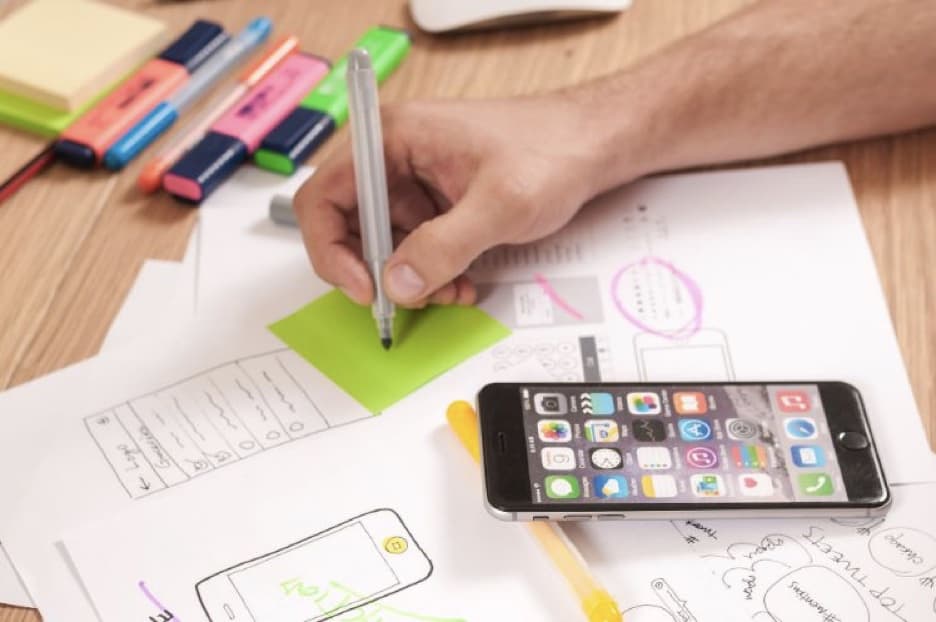Nearly 70% of all web searches and activities are performed on mobile devices. Mobile app development has become one of the hottest trends in the market and it shows no signs of slowing anytime soon. Mobile applications are great in theory, but most apps are missing the mark simply due to a lack of research.
The ideas behind many apps could revolutionize the way we live, but few actually do. Why is that?
Simply, lack of research. Specifically, lack of UX and usability testing.
What is UX and Usability Testing?
User experience is all the rage, but too many companies are missing the mark. Currently, it appears to be design first, work on function later. This is problematic when qualitative methods like usability testing and UX testing exist.
These qualitative methods give greater insight not only into your user but into their context and ecology. UX and usability testing give greater weight to the stories of data. Too many companies are looking at numbers when they need to remember to look at the full picture- the stories of their users.
Used interchangeably, these testing methods are quite different. Usability tests aim to answer three specific questions:
- How easy was this app to use?
- Did the user understand how to use the app?
- Did this app satisfy a need?
UX testing is a close cousin of usability tests, but it focuses on a user’s emotional, contextual, and ecological state before, while, and after using the app. UX testing is the storytelling method. For example, a UX test would capture the stories of young, single mothers embracing a new grocery app designed for food deserts. These are the stories that stick. These are the stories that have led to some of the greatest innovations.
How do I conduct a UX or usability test?
The goals
To get great findings, researchers have to set good goals. Setting goals starts with identifying the problem area and establishing how your app fills that gap. During the discovery phase, researchers will come away with artifacts that they can use in later research and produce findings that will lead to later iterations. At this point, the research team should speak with stakeholders to draw up a roadmap for the app in addition to competitive analyses to understand how the app stacks up.
If prior research has been done for this app, the researchers should refer to their repository as they design testing and set goals During this phase, researchers should understand who the target users are so that they will know who to recruit later. This is particularly important if your research is directed toward users that are on the fringes or highly specialized.
The research team should link up with their business team to get an idea of what resources they have at their disposal as well as align on the timing and scope of the project. During these meetings with stakeholders, the researchers should define what is known and what they would like to know. Further, they should meet with the creatives team to get sign-off on the prototype.
Once all of these artifacts are compiled, the research team can define the goals for this round of testing as well as their hypotheses.
What you need from stakeholders:
- Relevant expertise from SMEs
- App roadmap
- Information on the target audience
- Past relevant research
- Prototypes
What you will develop:
- Goals
- Hypotheses
The tasks
Set users up for success by crafting task scenarios that rely on precision, action, and natural use. Conduct your testing on a medium that reliably allows screen recording as well as narration to see what users do and hear why they are doing it.
The tasks should be clear and concise. Keeping tasks simple and relevant to your research is key to producing solid findings. Additionally, because users are giving you their time, it is important to use it wisely. Poor testing plans can completely derail this necessary research.
For example, if your business is focusing on CTAs, it would be smart to test headlines and wording on buttons. Upon narrowing the scope, researchers can begin to compile tasks like “Find out if there are similar products on sale” and questions like “What does a customer have to do to get this offer?”. Tasks and questions like these are used often in UX testing to understand the logical and emotional experience in addition to the various ways one can complete a task. These questions must be clear, concise, and open-ended to get the best findings.
Good task scenarios are simple and open-ended:
- Register as a new user
- Send money from your checking account to a friend
- Sign up for the newsletter
Bad task scenarios are cluttered and suggest:
- Use this app, navigate to the grades page, and check your grade.
- Go to this website, look for accounts, click the last statement, and check out how much you have spent.
The people

Participants in the study should be representative of the target audience. It is increasingly important for companies to understand who makes up their target audience so that they can deliver better experiences.
Additionally for new features or disruptive technology, it may be worthwhile to think ahead about contracts and NDAs to ensure ideas aren’t relayed to competitors. To get users engaged in research activities, incentivize them by paying them. Recruit well, compensate generously.
Great participants are:
- Representative of the target audience
- Use technology with updated and relevant Operating Systems
- Willing to sign a NDA
- Agreeable to testing frequency
The tests
To get the most accurate results, test users in the wild. Luckily remote-testing has become easier than ever for researchers . Simple and effective, all researchers need to gather sufficient findings is the ability to record a user’s screen and the ability to hear their thoughts. The platform then organizes these recordings for the researcher to review and analyze.
Diary studies are one of the best tests to perform as they can cover both usability and UX testing. When researchers conduct these tests, they must lean into storytelling. Users should feel empowered to speak their thoughts and feelings as they complete tasks. By being able to see their screen and hear their thoughts, researchers can see the emotional experience, the environmental impacts, and understand how products are used. Researchers can use a mixed-methods approach to not only understand current use and feelings, but they can use these tests to suggest paths of iteration and innovation.
What you need to test:
- Screen-recording
- Ability to record user’s thoughts
- A repository to store and organize all recordings
- Analysis capabilities that allow you to dig into the recordings using word frequency, probing, filtering, coding, geolocation, and sentiment/tone analysis.
Example Tool: EthOS
The analysis
If possible, collect and analyze data as it comes in. When researchers are able to analyze during the test, they can correct anything that may be going wrong to get more refined results from later tests.
During the analysis, researchers should focus on usability metrics like completion rates, task times, satisfaction rates, and error rates. These qualitative metrics allow researchers to better catalog and tag findings for stakeholders. These qualitative finds can then be used to create user narratives to strengthen personas and motivate stakeholders to meet users where they are.
Upon analysis, researchers should compile the research findings into a report to share with stakeholders. This report should include:
- The problem & reason for testing
- The methodology
- The test results
- The findings & suggestions


